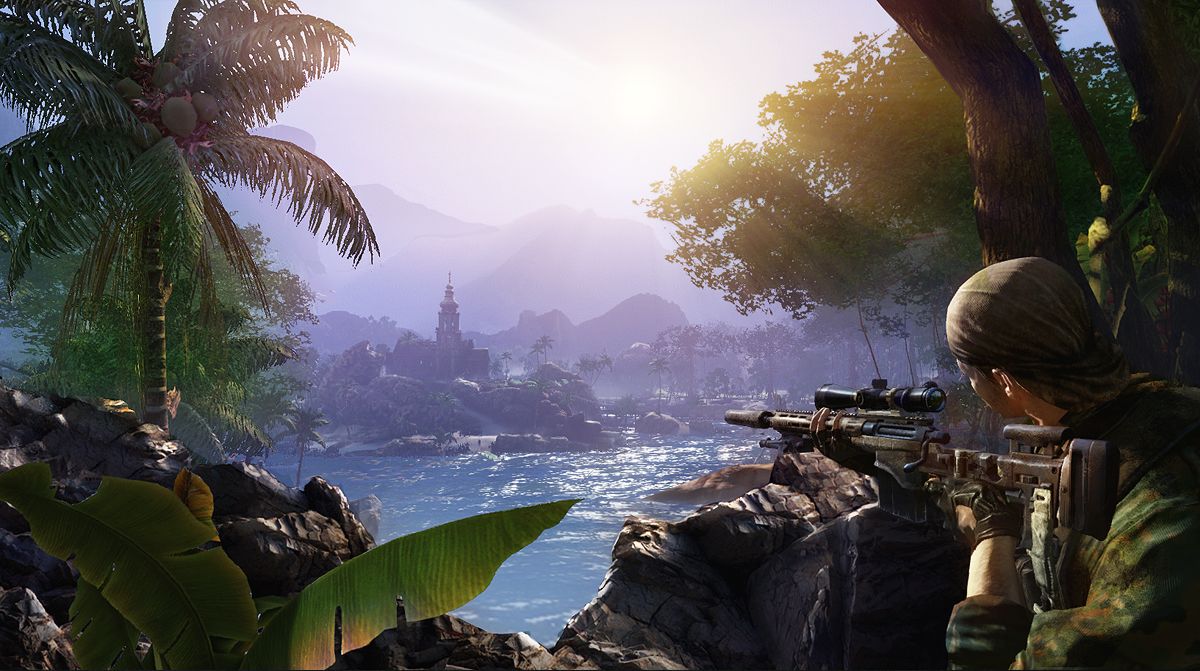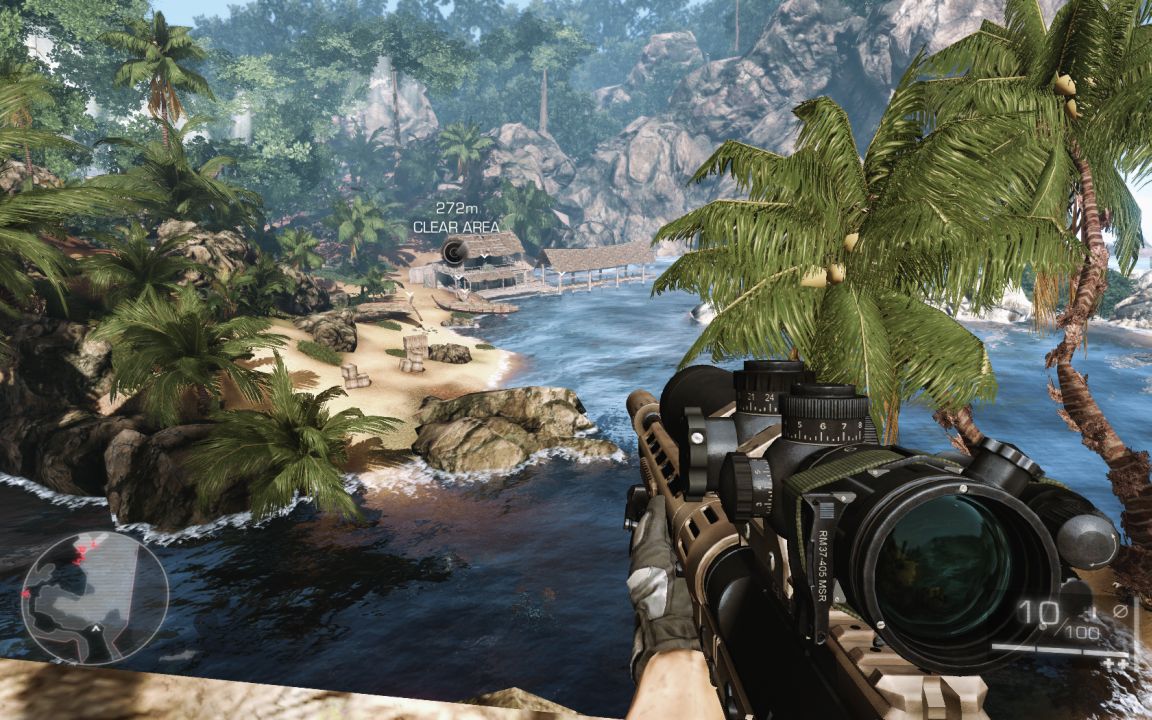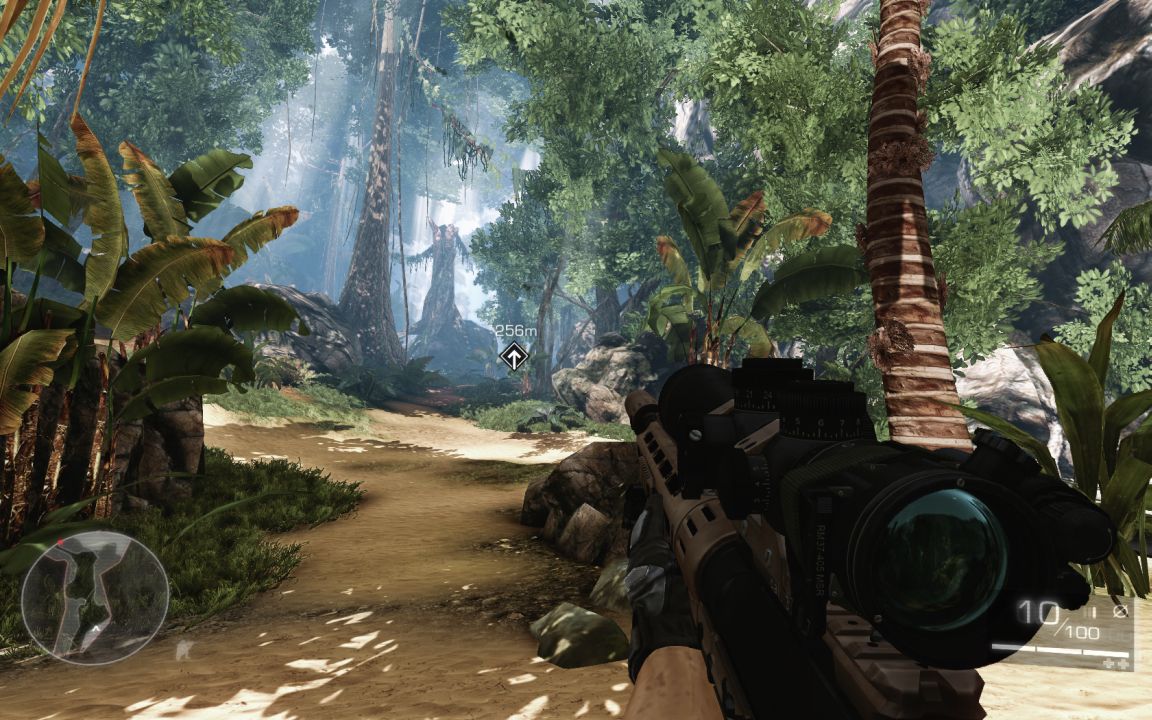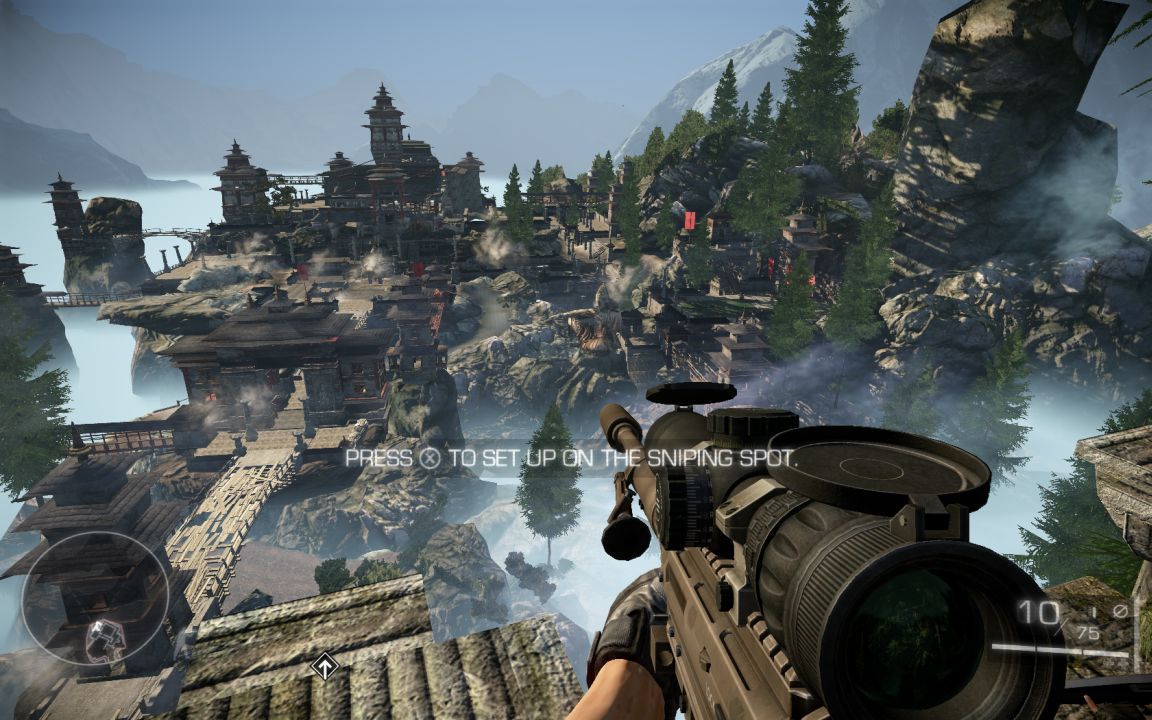Sniper: Ghost Warrior 2 Review
A glitchy but somewhat enjoyable first game had us crossing our fingers for an improved sequel from City Interactive. The sniping genre has intensified of late with stiff competition coming from Sniper Elite V2 last year so they need to hit the ground running this time.
The CryEngine 3 (also used for Crysis 3) certainly gives the game a graphical boost. The game is off to a sunny start in the Philippines with wonderfully bright lighting in the jungle environments being a fine tonic to any gamer fatigued with all the grey corridors and city environments in others shooters.
The trees and foliage seem to be made of horrible flat sheets though which snaps you out of your sightseeing early on. More urban environments like Sarajevo bring us back to familiar dull territory too. It’s surprising how early the game attempts to ditch the enjoyable graphics with an over-reliance on night stages, leaving you looking through night-vision goggles with grimmer visuals than a Paris Hilton home video.

The Tibetan stage saves it at the last though leaving you with a much better lasting impression after the end credits roll. Fans of the Tibet stage in Uncharted 2 should enjoy the first-person perspective on some similar looking crumbling temples and monasteries.
Anyway, onto shooting people in the face. The long-range sniping itself is solid. The various difficulty levels offer unique experiences. Wind direction and bullet drop over distance are all factors to take into consideration when lining up your shot. On casual and regular settings a separate handy red dot on your scope shows where the bullet will actually land. The dot even gets brighter when you’re over your target.
Playing on hardcore removes this feature, leaving you to judge the variance yourself. You can try this option in the shooting range from the main menu. I found it to be too inconsistent, requiring too much trial and error that you’d be punished for mercilessly against real targets who would fire back upon noticing bullets carving an outline in the wall behind them.
A pistol sidearm is available for when things go bad -and they will- but long range is the way to go as the pistol’s effectiveness is akin to you firing it backwards into your own face. You can’t even pick up dropped enemy assault rifles, even when you’re stuck with just the pistol in one part. Admittedly, the first game let you carry an AK but I never had to fire it once. But the AI is more aggressive this time and can make their way to your position with ease.

Clicking L3 when targeting slows down time briefly to line up the perfect headshot, but hitting moving targets still requires you to aim ahead of where they’re going to account for the travelling time of the bullet. Nailing a double or even a triple kill this way with one bullet always manages to raise a smile. Your character’s heartbeat increases when you’ve been running or as a shootout intensifies, meaning you sometimes need to wait until it calms down, otherwise your scope dances around like it’s on a tumble dryer.
The rifles themselves are all bolt-action too, meaning that there’s a sickening gap between each shot, which for better or worse, ramps up the tension when you miss and have to unleash another before the alarm is raised.
Many missions often involve too much handholding as you’re told by your spotter to take out specific targets in order. This is ok during the tutorial stage as they explain the basics of prioritising guards who can’t be seen by others, but it’s a regular obstruction to your independent strategies. Your AI spotter often glitches too, getting stuck on the ground and forcing a restart.
When you are given the freedom to clear an area yourself, the game starts to play as you’d always hoped. Carefully planning who to take out during narrow windows of opportunity to avoid guards discovering bodies is a tense, but empowering experience.
There’s rarely room for error though. Once an alarm is raised, every guard knows where you are straight away and will shred your life bar in a flash. This is at odds with their occasional dumb behaviour like them guarding an area by facing a wall like a disobedient pupil.
Missions where you’re forced to get closer are often infuriating too. A suspicion metre rises when a guard has caught sight of you. Get back into cover quick enough and it resets and the guard will forget he saw a bush with a sniper rifle and a face at one end of a concrete corridor.

Sometimes though, the metre flies up despite you being perfectly behind cover, leading to unnecessary shootouts (death). You’ll often have to repeat slow sections, just to fail again as the checkpoints are ‘you’ve-got-to-be-f**king-kidding-me’ sparse.
The campaign is over in about five hours, meaning the pressure is on for the multiplayer to pull this out of the doomed ‘rent only’ category. So it was surprising to see that City Interactive seem to think that two maps and a solitary team deathmatch mode is enough to keep us interested beyond day one.
Sniper Ally in Sarajevo and a pair of ravine-split cliffside bunkers in the Philippines are all that’s available. While it won’t be long before you grow bored of the miserly offerings, there is some brief enjoyment to be had here, presuming you’re only renting of course. The maps are well designed for lots of sneaky spots to lie prone and try to take out someone on the move (difficult). More reliable is slowly scanning the horizon for a glimpse of another prone sniper between sandbags, or crouched near a window.
Targeting is similar to casual/normal settings offline, with a small red dot compensating for wind and bullet drop. Instead of slowing down time, clicking L3 will steady your aim for a few seconds, which works just as well. No hardcore settings are available, which will undeniably annoy hardened snipers.

I experienced a few shots not registering on stationary targets, which is all sorts of annoying. Server stability seems to be an issue as every player seemed to have an unusually poor ping rating on the scoreboard screen.
That’s nothing compared to the large amount of random ‘suicides’ I kept encountering immediately after respawning. No falling into cliffs, or shooting a barrel at close range, just literally respawning and dropping dead immediately. I couldn’t even attribute it to a rival kill, as sometimes I’d be alone in a room. With team victories usually being very close, the lost points for each of these occurrences added an overwhelming sense of ‘why bother’.
Nailing headshots can be lots of snipy fun, but I can only recommend this as a rental at best thanks to the brevity of the single player game and the lack of content for the multiplayer. Some offline DLC has just been announced but at £8.99 on top of what you’ve already paid, it’s hardly tempting.
